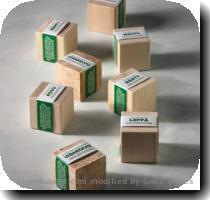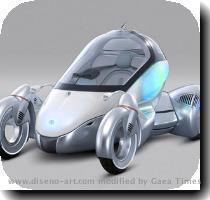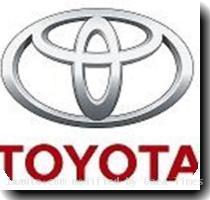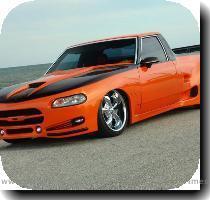After grabbing biggest share of US auto market, Asian automakers will struggle to build lead
By David Runk, APTuesday, January 12, 2010
Asian automakers face battle to keep US dominance
DETROIT — Asian automakers grabbed their biggest chunk ever of the U.S. car and truck market in 2009, but they’ll struggle to build on that momentum this year as rivals in Detroit offer a fleet of efficient, small cars.
All automakers that sell cars and trucks in the U.S. will try to woo cautious consumers still nervous about heavy debt, high unemployment and rising gas prices.
Market share held by 10 Asian automakers — including leaders Toyota Motor Corp. and Honda Motor Co. — rose to 47.4 percent last year, surpassing for the first time Detroit’s three players, which slipped to 44.2 percent, according to Autodata Corp.
Those gains will be hard to extend this year. The struggle will center on small and midsize cars, as well as alternative-fuel models that run on electric batteries, or hybrid combinations of gasoline and electric. The rivals all showed their wares this week at the Detroit auto show.
The Asian manufacturers’ longtime dominance in smaller and greener cars gives them a running start this year, but Ford Motor Co. has countered with a revamped compact Focus and General Motors Co. is touting an all-electric Volt and new small cars like the Aveo, which is supposed to get about 40 mpg on the highway.
GM and Ford also have strong sales in midsize cars, and the 2010 Fusion hybrid grabbed the North American Car of the Year award at the Detroit show earlier this week. That’s added to growing signs of strength for Detroit, even after a tough year.
But that bad year was enough to shift Asian brands into the top market share spot.
That’s a big reversal from 1980, when the domestics owned three-quarters of all sales and the Asians held just 18 percent. Back then, Detroit still ruled a car culture that was just starting to digest the long-term implications of two gas price spikes in the 1970s.
That force spurred a shift toward greater demand for smaller, fuel-efficient cars. The 1990s blunted that, when lower gas prices gave rise to SUVs and boosted the fortunes of Detroit. Still, the Asian manufacturers, who last year built nearly 60 percent of their U.S. cars in North America, were on their way to car dominance.
In 2009, Detroit’s reliance on trucks came back to haunt it. SUV sales collapsed the year before in the wake record-high gasoline prices. Then came the financial meltdown and credit freeze. With mounting debts, GM and Chrysler Group LLC were forced into bankruptcy protection and Ford had to use billions in borrowed money to stay alive.
That raised consumer concerns about GM and Chrysler and turned off many buyers.
This year, fuel-efficient cars will appeal to drivers who want to avoid resurgent gas prices and the higher sticker prices on big cars and trucks.
But it’s a brutal market overall. The outlook for industry sales isn’t certain for 2010, but last year’s drop of 21 percent to the worst level since 1982 doesn’t inspire confidence. Just 10.4 million cars and light trucks were sold, far below the average of 17 million for much of last decade.
Michael Robinet, an auto industry analyst for the CSM Worldwide consulting firm near Detroit, said strong products from Detroit, expanding European manufacturers and the upstart Chinese all could work to erode some of the market share that Asian companies have gained.
For example, he cited the midsize sedan market, once the almost exclusive domain of Toyota, Honda and Nissan Motor Co. Now, they face the Ford Fusion, Hyundai Sonata, and GM’s Chevrolet Malibu that all are competing for a slice of the market.
“It’s going to be an all-out war,” Robinet said. “We’ve got some fantastic product. We’ve got some very strong competitors.”
U.S. car buyers, Robinet noted, are looking more at each automaker on its own merits rather than where they’re based. And with Asian automakers building so many of their vehicles in North America, he said, there’s less of a distinction between them and Detroit.
“Consumers are being very careful about how they spend their money,” he said.
Toyota, which dominated hybrids with sales of 530,000 Priuses worldwide in 2009, will try to reinforce its strength there. The Japanese company plans to expand the brand from a single vehicle to family of hybrids.
At the auto show Monday, it unveiled a new hybrid concept car that is a smaller version of the Prius. The FT-CH compact is geared toward younger buyers and has a sleek, rounded look and a windshield that swoops over the headlights.
Toyota said the two-door car is 22 inches (55 centimeters) shorter than the Prius, and is lighter and more fuel efficient.
Honda, meanwhile, has struggled against the Prius. Its Insight hybrid flopped.
The sporty two-door CR-Z hatchback is Honda’s attempt to bring a bit of flair to the hybrid segment, whose design has long been dominated by the sculpted lines and sloping roofs of the four-door Prius. The two-door CR-Z, by contrast, features a compact profile and roadster look. It also comes with multiple drive modes that allow cycling between sportier or more fuel-efficient settings. Pricing will be announced at a later date, Honda said.
Hyundai Motor Co., one of the top share gainers last year in the U.S., is offering the 2011 midsize Sonata with a class-leading 35 mpg on the highway.
“Hyundai is one to watch … because they’ve been successful in a pretty ugly market,” said Jeff Schuster, J.D. Power’s executive director of automotive forecasting.
Chinese automakers largely skipped the Detroit show this year. But BYD Co., with backing from billionaire Warren Buffett, plans to export cars to the U.S. in the second half of 2010. BYD, which makes traditional gasoline-powered vehicles, aims to offer Americans an all-electric five-seat e6 crossover, to be built in China.
The crossover — a smaller SUV — must meet U.S. safety standards, including bumper height requirements and interiors that limit how far an unbelted passenger can travel in a crash.
The automaker plans to use partnerships to establish a U.S. dealer network to sell and service the e6, but locations and other details haven’t been finalized.
A company that wants to import vehicles typically goes through a self-certification process to state that it meets U.S. safety standards. BYD said the e6 will be built strictly according to U.S. safety and emissions standards, and the company is doing tests in China for certification.
Tags: 2010 Detroit Auto Show, Asia, Automobile Shows, Automobiles, Automotive Technology, China, Detroit, Detroit Auto Show, East Asia, Events, Greater China, Industry Conferences And Trade Shows, Michigan, North America, Travel, United States
|
January 13, 2010: 2:20 am
Often we forget the little guy, the SMB, in our discussions of the comings and goings of the Internet marketing industry. Sure there are times like this when a report surfaces talking about their issues and concerns but, for the most part, we like to talk about big brands and how they do the Internet marketing thing well or not so well. |




thomas